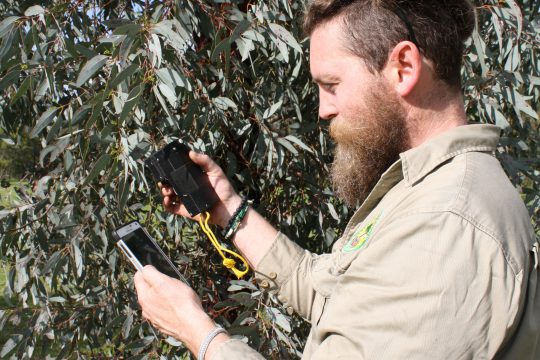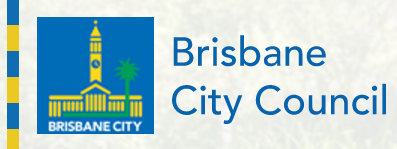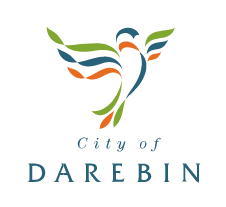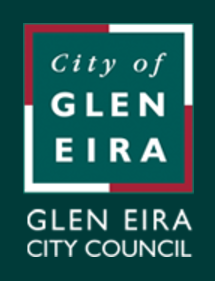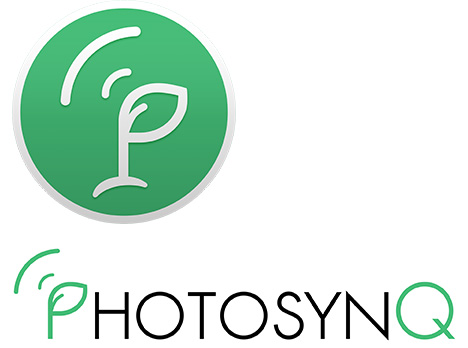
Link: photosynq.org
PhotosynQ – The next Game-Changer
PhotosynQ, developed in David Kramer’s Lab at Michigan State University, is the next global game-changer in environmental science and incorporates a hand-held device with an online platform. The PhotosynQ system allows for intensive data collection thereby facilitating a greater understanding of how the natural world functions in its innumerable complexities. It is a collaborative online plant research platform; this enables users to collaborate world-wide, to create and share projects, and to collaboratively analyze detailed and sophisticated environmental scientific information.
A peer to peer platform that allows for global interindustry collaboration to extend our understanding of natural systems at unprecedented speed. An open source scientific endeavor that will enable current generations to collect baseline references for future generations to develop technologies we can’t currently imagine and engage management practices of the natural world that embrace holistic principals based on scientific understanding. Open science will enable more people to participate, which in return will enable projects which cannot normally be accomplished with the current scientific approaches and ultimately lead to better science and education.
PhotosynQ is a tool for any environmental industry you can think of. If you want to understand anything that conducts photosynthesis and interacts with the planet directly, PhotosynQ can help you conduct the research and measure the complex parameters required to truly understand what is happening. There are no licenses or hidden costs, the platform is free to use with equipment compatible to open source, and is by industry standards extremely cost effective compared with any other device on the market that pales in comparison to PhotosynQ.
One of the current tools used on the PhotosynQ platform is the MultispeQ v1.0
The MultispeQ (hand-held sensor device) combines the functionality of a handheld fluorometer, a chlorophyll meter, and a bench-top spectrometer into a modifiable scientific tool that brings laboratory quality measurements to field applications. The MultispeQ links to an android device via Bluetooth then uploads the data to the PhotosynQ cloud based platform instantly.

The MultispeQ can measure an impressive range of factors such as ambient temperature, leaf temperature differential, pressure, humidity, co2 respiration, stomatal conductance and utilizes geotagging and time stamp features.
The MultispeQ simply measures photosynthetic phenotypes in real environmental conditionswith the press of a button, and within a few seconds uploaded to the PhotosynQ (platform).
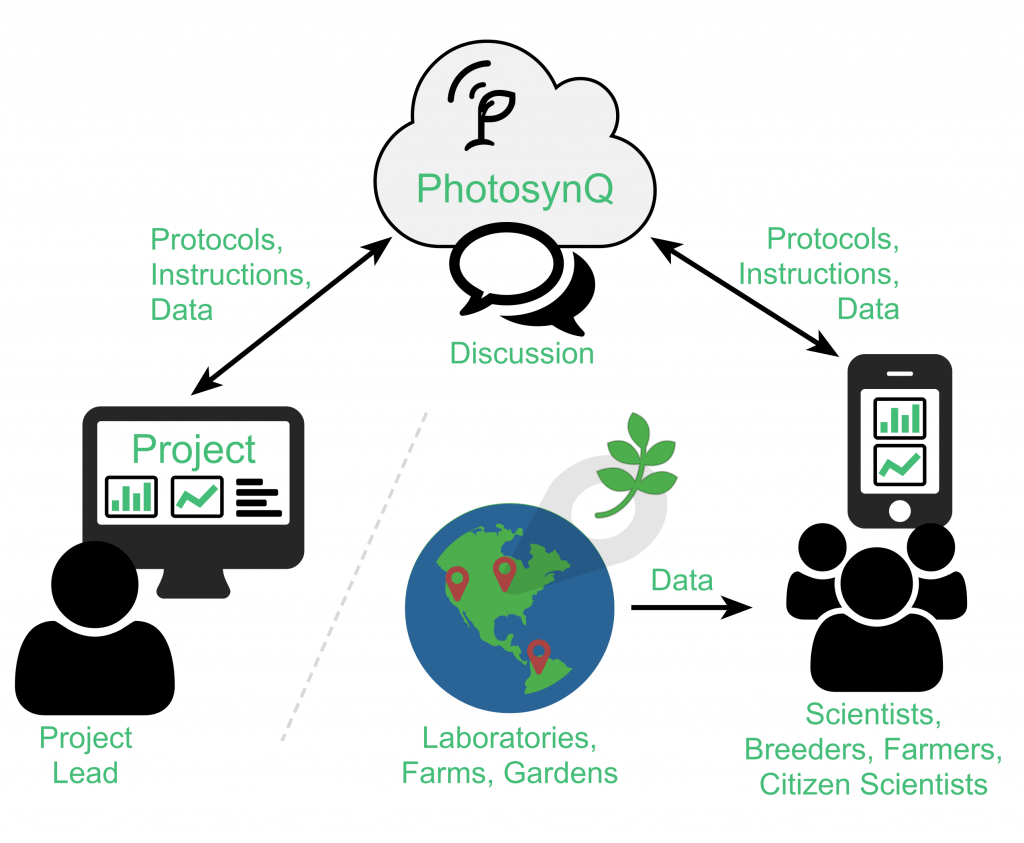
PhotosynQ is an example of the shift in how science is conducted. The inherent nature of open source will change science forever. The era of ivory tower science is over, the time of global collaboration in how science is done, viewed and understood is here and all humanity can contribute and engage.
An Arboriculture perspective.
Two years ago, Matthew Daniel of Global Urban Forest Pty Ltd was invited by the PhotosynQ team to test the platform under a Beta program. A small group of researchers from a diverse field of industries from Agricultural science in Africa to marine science in Australia were given a 3D printed multispeQ prototype to conduct research in their chosen fields
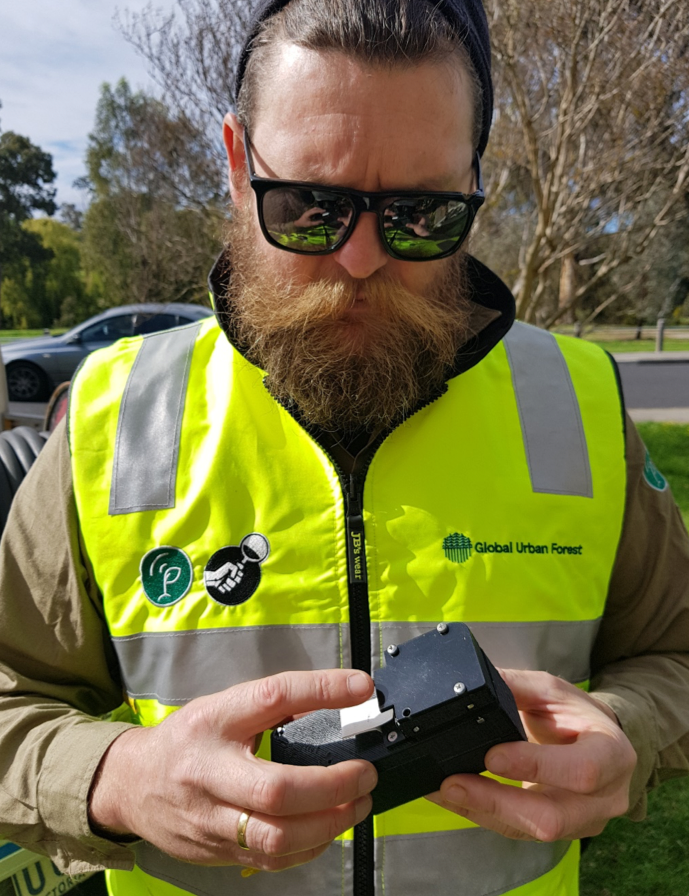
Matthew’s focus was the Arboriculture and Urban Forest industry and developed the Tree Health Calculator project to understand and make a link between tree and soil health and function.
Due to the Photosynq platform being flexible and modifiable specific custom designed additional data can be included in the user’s experimental design. This meant Matthew could combine his soil health measurables into the overall data collection exercise.
Not only additional measures can be included in each experimental design but human observational data can also be applied. This means the current Arboriculture industry standard of a Visual Tree Assessment (VSA) can be included and improved on.
TREE HEALTH CALCULATOR 1.0
The Tree Health Calculator combines Photosynthetic and Physical soil measures with site specific observational data. This has never been done before. Additionally, the information collected can be interrogated and analyzed immediately using the PhotosynQ online platform dashboard graph and can run complex statistics. The data can also be extracted and applied to external analysis such as multivariant and even deep learning neural networks (AI)
To date Matthew has collected over 9000 measures of the Urban Forest:
- Trees undergoing soil remediation and measuring the response in better growing conditions
- Trees on Development sites to capture the impact of tree health from incursion to the Tree Protection Zone (TPZ)
- Trees that have been poisoned and developing better decision making on how and when to intervene or make the determination the tree has ceased function
- Species specific Poor, Fair and Good – Visual Tree Assessment (VSA) based on photosynthetic function
- Soil Co2 respiration of compacted soils, turf park trees, remediated soils and different standards of composts and mulches

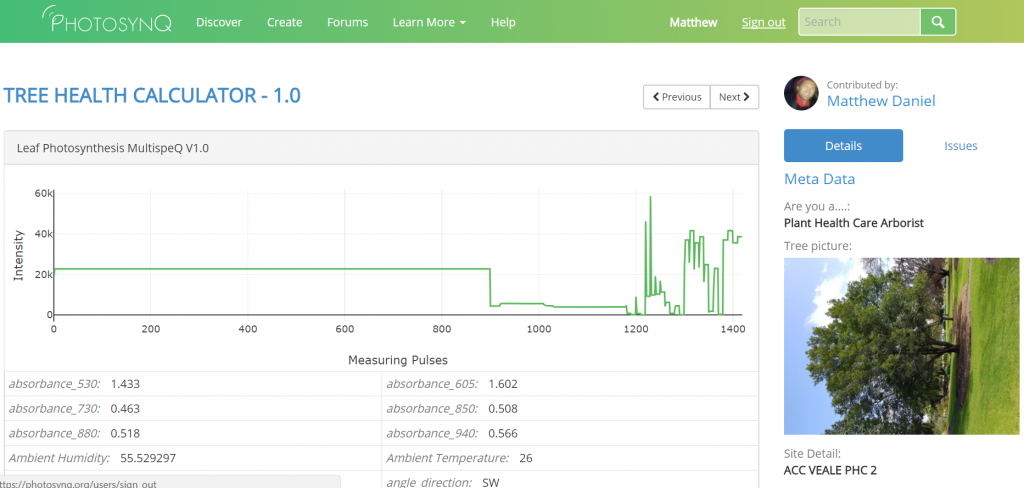
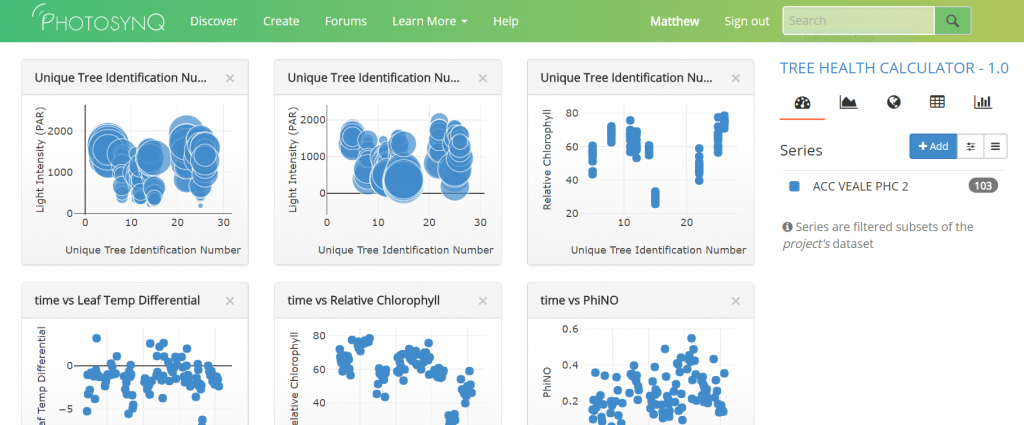
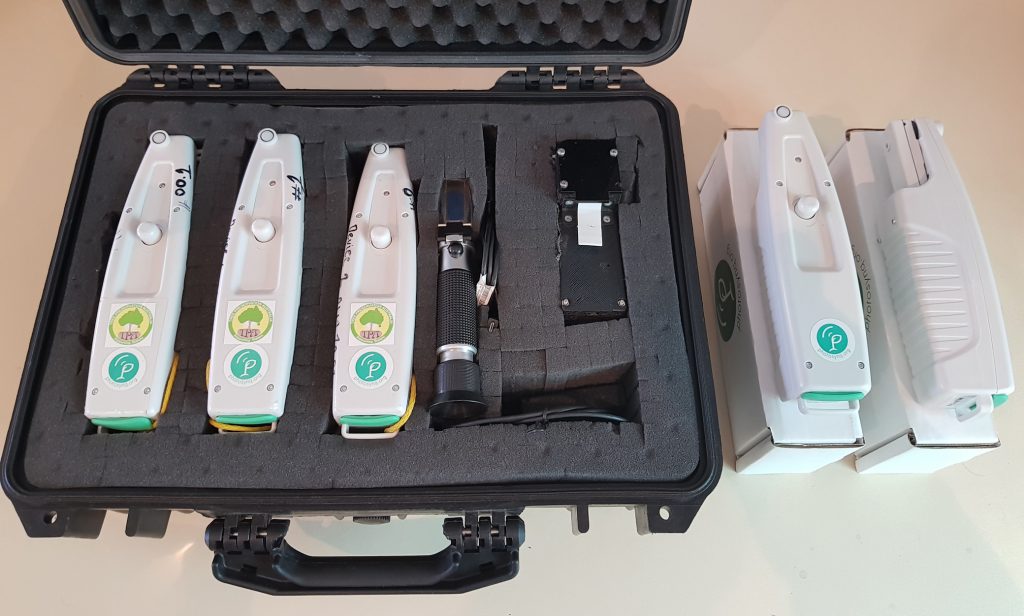
The development of PhotosynQ & MultispeQ has revolutionized the way we diagnose trees and will continue to build our understanding of tree/plant/soil science.
The combination of these platforms builds on the aged Visual Tree Assessment (VTA) approach commonly used in the Arboricultural industry. The platform helps to distinguish the photosynthetic capacity of the subject tree/plant in real environmental conditions with consideration of biotic and abiotic stresses and soil science.
Some of the elements considered vital and presently collected using the MultispeQ are as follows but not limited to:
- efficiency of photosynthesis or quantum yields of photosystem 2 (Phi2)
- energy loss (Phi NO)
- non-photochemical quenching (PhiNPQ)
- relative chlorophyll content (SPAD)
- photosynthetically active radiation or light intensity(PAR)
- ATP production or proton motive force (PMF)
The combination of MultispeQ and PhotosynQ has enabled early identification of diseases, chlorophyll fluctuation, photosynthesis capacity, soil carbon configuration and microbiology connection and much more to help piece the complexities with management of trees within an urban forest. This evolution has forged the development of the Tree Health Calculator by Matthew R Daniel.
Tree Health Calculator 1.0
Tree Health Calculator 1.0 Results
PhotosynQ Focus – Blog
tree health calculator BETA
tree health calculator BETA – Results
While a baseline tree/plant and soil measurements are vital, the scientific platform using MultispeQ and PhotosynQ to draw comparisons with canopy morphology traits and other areas of critical interest.
PhotosynQ platform allows multivariate analysis, and in future data to apply to Deep Learning Neural Networks (AI)
Over time MultispeQ and PhotosynQ will authenticate the real environmental conditions influencing tree health attributes.
The progression of the tree health calculator will create a complete understanding of abiotic and biotic influences, photosynthetic phenotypes and complex linkages to a tree’s growing environment above and below the ground.
Furthermore, the Tree Health Calculator will remove speculation and help determine the appropriate Plant Health Care (PHC) program while validating areas of research.
Prior to the development of PhotosynQ & MultispeQ it was virtually impossible to exactly reproduce the environmental conditions that affect tree growth. It is commonly known that the delicate balance inside plant tissues can be adversely affected by only few seconds of exposure to harsh weather conditions, alternating moisture levels or varying soil pH, insect infestation and fungal pathogens.
Therefore, the evolution of the PhotosynQ online platform and the MutispeQ hand-held device, will transform plant research by facilitating seamless exchange of scientific data and knowledge among researchers worldwide.
We believe PhotosynQ can profoundly affect the traditional way we view scientific research and collaboration. It has the capacity to revolutionize the Arboriculture industry and projected ways we manage the Urban Forest within a short period of time.
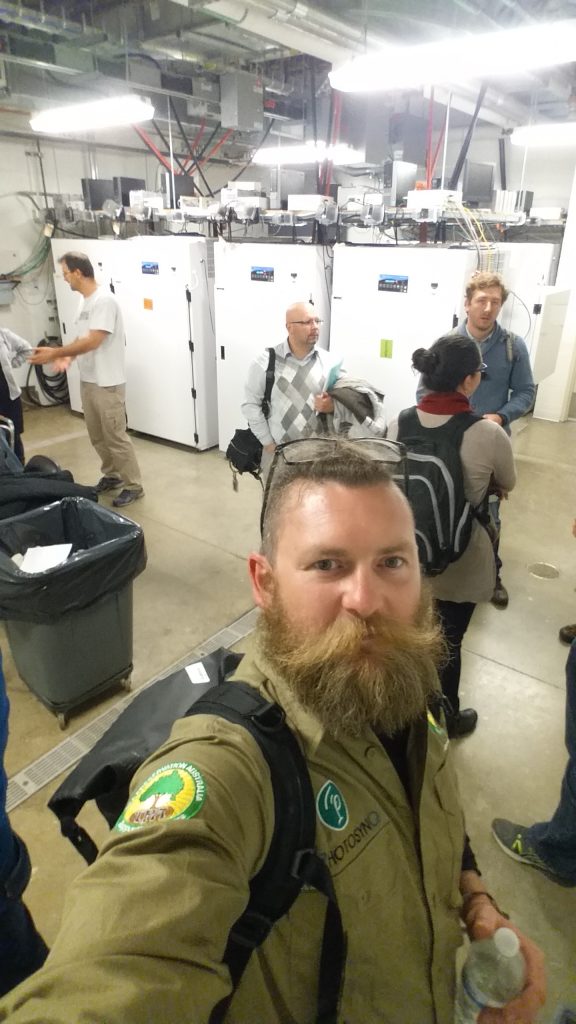
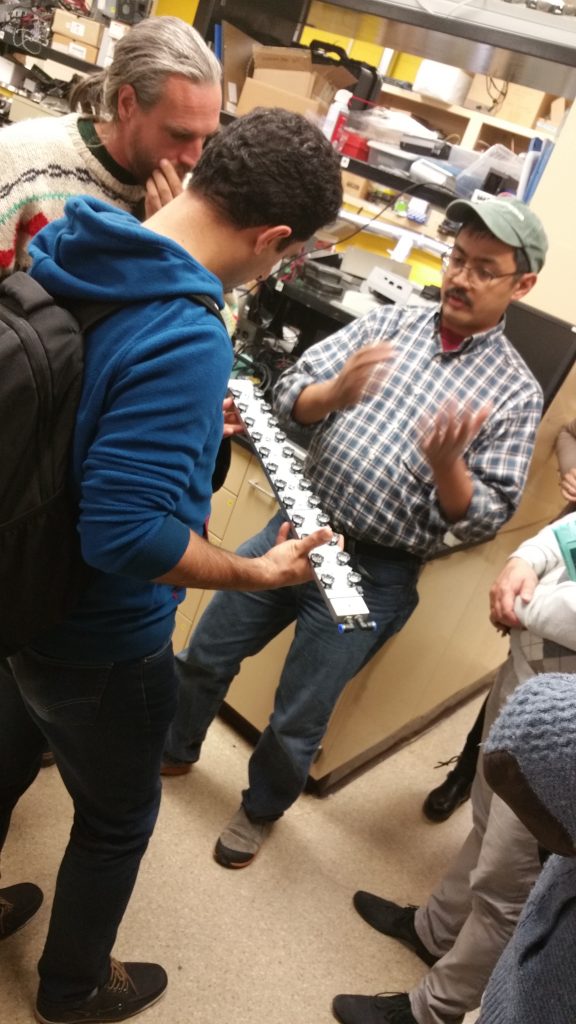
Contact Us
Send Global Urban Forest a message
